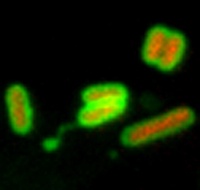Stefania Spanò

Our research seeks to understand why human macrophages are unable to fight S. Typhi and aims to develop ways of boosting their efficacy. We recently discovered two molecular components required by mouse macrophages to kill S. Typhi. We now aim to identify the antimicrobial molecules associated to these components using advanced technologies that allow to detect specific molecules from complex cellular samples.
Identifying novel antimicrobial molecules will represent a significant breakthrough in understanding the function of the immune system and may provide the foundation for developing new treatments for bacterial diseases. Since the same molecules may recognize other deadly bacterial pathogens, in particular the agents of tuberculosis and leprosy, this research may also advance treatment of these diseases.
